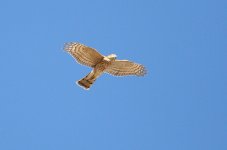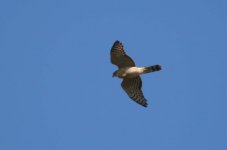Brett Richards
Well-known member

And I repeat, even if this is proven that the bird you refer is an Eurasian Sparrowhawk, it is not a reason to confuse someone who might want to learn and destroy the basic identification feature, such Accipiter in Europe with stripes is a young goshawk.
If you disagree, you have to make a comment to all posts sharing identification and say "except in albino", "except in melanistic", "except in an atypical individual seen once 68 years ago", etc. Good luck.
If you knew there were exceptions then you should have said 'nearly always' instead of 'always'. If you didn't know, then you have learnt something.
This is my last post on this matter. I see no point in pursuing this further with someone who won't admit that their original statement was inaccurate.
Brett





